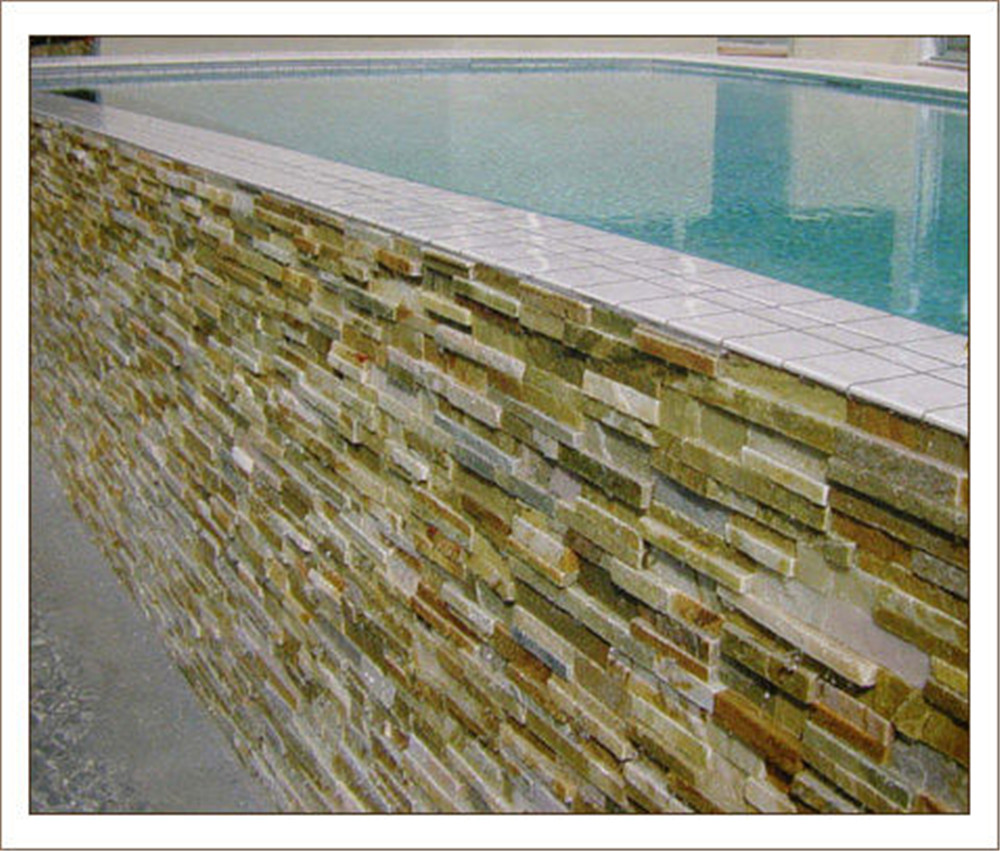Introduction
Travertine is a type of limestone that forms around mineral springs and geothermal hot springs. It has been used for centuries in construction and art due to its unique appearance and durability. Cultured travertine, also known as reconstituted or engineered travertine, is a man-made alternative to natural travertine that offers a more uniform appearance and enhanced durability. In ledge stone for sale , we will delve into the world of cultured travertine, exploring its origins, manufacturing process, characteristics, applications, advantages, and maintenance.

Origins of Cultured Travertine
Cultured travertine is created through a process that involves combining natural travertine dust or chips with a resin or cement binder. This mixture is then molded and cured to create tiles, slabs, or other products that mimic the look of natural travertine. The idea behind cultured travertine is to provide a more consistent and affordable alternative to natural stone, while still capturing the beauty and elegance of travertine.
Manufacturing Process
The manufacturing process of cultured travertine involves several steps that require precision and expertise. First, natural travertine is mined and processed into fine dust or chips. These travertine particles are then mixed with a resin or cement binder in specific proportions to create a homogeneous mixture. The mixture is then poured into molds of various shapes and sizes, depending on the desired end product.
Once the molds are filled, the mixture is left to cure and harden. This curing process may involve heat and pressure to ensure that the cultured travertine achieves the desired strength and durability. After curing, the cultured travertine products are removed from the molds, inspected for quality, and finished with polishing or sealing treatments to enhance their appearance and performance.
Characteristics of Cultured Travertine
Cultured travertine closely resembles natural travertine in terms of appearance, with its distinctive veining, color variations, and textured surface. However, there are some key differences between the two that set cultured travertine apart. One of the main advantages of cultured travertine is its uniformity and consistency in color and pattern, which can be difficult to achieve with natural stone due to its inherent variations.
Additionally, cultured travertine tends to be more durable and less porous than natural travertine, making it more resistant to stains, scratches, and other damage. This enhanced durability is especially beneficial in high-traffic areas or areas prone to moisture exposure, where natural stone may be more susceptible to wear and tear.
Applications of Cultured Travertine
Cultured travertine is a versatile material that can be used in a wide range of applications, both indoors and outdoors. In residential settings, cultured travertine is commonly used for flooring, walls, countertops, backsplashes, and other decorative elements. Its elegant appearance and durability make it a popular choice for kitchens, bathrooms, living rooms, and outdoor patios.
In commercial settings, cultured travertine is often used in hotels, restaurants, offices, and retail spaces to create a luxurious and sophisticated ambiance. Its ability to mimic the look of natural stone while offering enhanced performance and consistency makes it an attractive option for designers and architects looking to achieve a high-end aesthetic without the cost and maintenance requirements of natural stone.
Advantages of Cultured Travertine
There are several advantages to choosing cultured travertine over natural travertine or other materials for your next project. One of the primary benefits of cultured travertine is its affordability compared to natural stone, making it accessible to a wider range of consumers and projects. Cultured travertine is also more readily available and easier to source in large quantities, making it a practical choice for commercial applications or large-scale projects.
Another advantage of cultured travertine is its versatility in terms of design and customization. Since cultured travertine is a man-made material, it can be produced in a variety of colors, patterns, and finishes to suit different aesthetic preferences and project requirements. This flexibility allows designers and homeowners to achieve their desired look without compromising on performance or durability.
Maintenance of Cultured Travertine
Proper maintenance is essential to ensure the longevity and beauty of cultured travertine surfaces. While cultured travertine is more durable and stain-resistant than natural stone, it still requires regular care and maintenance to preserve its appearance and performance. Here are some tips for maintaining cultured travertine:
1. Regular Cleaning: Clean cultured travertine surfaces with a mild detergent and warm water to remove dirt, grime, and spills. Avoid using abrasive cleaners or scrubbing pads, as they can damage the surface of the stone.
2. Sealing: Depending on the type of cultured travertine you have, it may require periodic sealing to protect against stains and moisture penetration. Consult with your manufacturer or installer for specific recommendations on sealing products and frequency.
3. Avoid Harsh Chemicals: Do not use acidic or harsh cleaning agents on cultured travertine, as they can etch the surface and damage the finish. Stick to pH-neutral cleaners and avoid prolonged exposure to acidic substances like vinegar or lemon juice.
4. Preventative Measures: Place coasters under glasses and hot pads under hot dishes to protect cultured travertine countertops from scratches and heat damage. Use mats or rugs in high-traffic areas to reduce wear and tear on flooring.
Conclusion
Cultured travertine offers a compelling alternative to natural stone for those seeking the beauty and elegance of travertine without the cost and maintenance concerns. With its uniform appearance, enhanced durability, and versatile applications, cultured travertine has become a popular choice for residential and commercial projects alike. By understanding the origins, manufacturing process, characteristics, applications, advantages, and maintenance of cultured travertine, you can make an informed decision about whether this material is right for your next design or renovation project.
